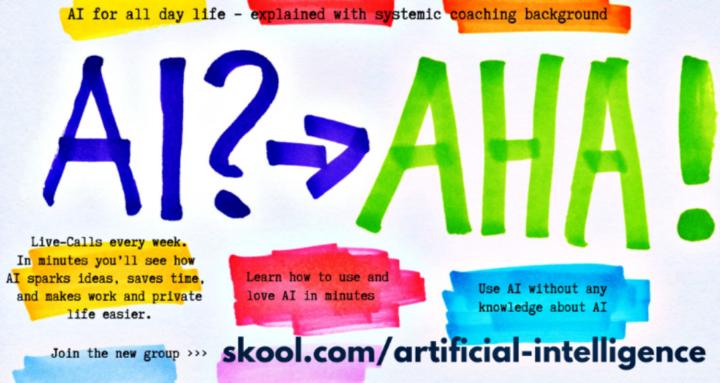
Write something
Network Science in Machine Learning
Network Science in Machine Learning: Network science studies complex systems as interconnected networks, revealing emergent properties and dynamics from social networks to neural architectures through mathematical analysis of nodes and edges. The engineering challenge involves analyzing massive real-world networks, detecting communities and patterns, predicting network evolution, understanding information flow and cascades, and designing interventions while managing computational complexity of graph algorithms. Network Science in Machine Learning Explained for Beginners - Network science is like studying how rumors spread at a party - you map who talks to whom (the network), identify popular people who know everyone (hubs), find friend groups (communities), and predict how fast gossip travels. Whether it's Facebook friendships, disease spread, or internet connections, network science reveals hidden patterns in how things connect and influence each other, showing why some videos go viral while others don't. What Defines Network Structure? Networks consist of nodes (entities) and edges (relationships) with various structural properties. Degree distribution: how connections are distributed. Scale-free networks: few hubs, many low-degree nodes. Small-world: short paths with high clustering. Random networks: Erdős–Rényi model baseline. Directed vs undirected: asymmetric relationships. Weighted networks: varying connection strengths. How Do Scale-Free Networks Emerge? Scale-free networks follow power-law degree distributions appearing everywhere in nature. Preferential attachment: rich get richer mechanism. Barabási–Albert model: growing networks with preference. Power law: P(k) ~ k^(-γ) heavy-tailed distribution. Hubs: highly connected nodes dominating topology. Robustness: resilient to random failures. Vulnerability: fragile to targeted attacks. What Is the Small-World Phenomenon? Small-world networks combine short paths with high clustering like social networks. Six degrees separation: short paths between anyone. Watts-Strogatz model: rewiring regular networks. High clustering: friends of friends are friends. Short paths: few hops between nodes. Navigation: finding short paths locally. Applications: brain networks, power grids.
0
0
Discrete Mathematics in Machine Learning
Discrete Mathematics in Machine Learning: Discrete mathematics studies countable, distinct structures providing the mathematical foundation for computer science and algorithms, from logic and proofs to graphs and combinatorics. The engineering challenge involves translating continuous problems to discrete domains, managing combinatorial explosion in counting problems, developing efficient algorithms for discrete structures, proving correctness and complexity bounds, and applying abstract concepts to practical computing problems. DDiscrete Mathematics in Machine Learning Explained for Beginners - Discrete mathematics is like working with LEGO blocks instead of clay - you deal with distinct, countable pieces that snap together in specific ways rather than continuous, moldable material. While calculus studies smooth curves and flowing changes, discrete math examines things you can count: computer bits (0 or 1), network connections, logical statements (true or false), and ways to arrange objects, forming the backbone of all digital computing. What Areas Comprise Discrete Mathematics? Discrete mathematics encompasses several interconnected areas fundamental to computing. Logic and proofs: foundation of reasoning and verification. Set theory: collections and operations. Combinatorics: counting and arrangements. Graph theory: networks and relationships. Number theory: properties of integers. Discrete probability: finite sample spaces. How Does Propositional Logic Work? Propositional logic manipulates statements that are true or false using logical operations. Propositions: declarative statements with truth values. Logical connectives: AND, OR, NOT, IMPLIES, IFF. Truth tables: evaluating compound propositions. Tautologies: always true statements. Logical equivalence: different forms, same meaning. Applications: circuit design, program verification. What Are Proof Techniques? Mathematical proofs establish truth through rigorous logical arguments. Direct proof: straightforward logical deduction. Contradiction: assuming opposite leads to impossibility. Induction: base case plus inductive step. Contraposition: proving contrapositive instead. Existence: constructive vs non-constructive. Counter-example: disproving universal statements.
0
0
Complex Systems in Machine Learning
Complex Systems in Machine Learning: Complex systems science studies systems with emergent properties arising from interactions between many components, from ecosystems to economies, where the whole exhibits behaviors not predictable from individual parts. The engineering challenge involves modeling non-linear dynamics and feedback loops, predicting emergent phenomena, understanding phase transitions and critical points, managing computational complexity of simulations, and designing interventions in systems with unintended consequences. Complex Systems Explained for Beginners - Complex systems are like ant colonies - individual ants follow simple rules (follow pheromone trails, carry food), but together they create sophisticated behaviors like finding shortest paths to food or building elaborate nests that no single ant planned. Similarly, stock markets, weather, and brains show behaviors that emerge from many simple interactions, creating patterns you can't predict by studying parts in isolation. What Defines Complex Systems? Complex systems exhibit characteristics making them fundamentally different from simple systems. Emergence: system-level properties not in components. Non-linearity: small changes causing large effects. Feedback loops: outputs affecting inputs. Adaptation: components learning and evolving. Self-organization: order without central control. Networks: interconnected components influencing each other. How Does Emergence Arise? Emergence creates system-level phenomena from component interactions without explicit programming. Local interactions: simple rules at component level. Global patterns: complex behavior at system level. Bottom-up causation: micro determining macro. Irreducibility: whole greater than sum of parts. Examples: consciousness, market crashes, flocking. Unpredictability: emergent properties surprising. What Are Feedback Mechanisms? Feedback loops create dynamic behaviors, amplifying or stabilizing system states. Positive feedback: reinforcing changes, creating instability. Negative feedback: opposing changes, creating stability. Delayed feedback: time lags causing oscillations. Nested loops: multiple scales of feedback. Balancing loops: homeostasis and regulation. Reinforcing loops: growth and collapse.
0
0
Dimensionality Reduction – PCA and t-SNE – in Machine Learning
Dimensionality Reduction – PCA and t-SNE – in Machine Learning: Dimensionality reduction using PCA and t-SNE transforms high-dimensional data into lower dimensions for visualization and analysis, revealing hidden structures while preserving essential relationships. The engineering challenge involves selecting appropriate techniques for different data types, preserving meaningful variance or local structure, handling computational complexity for large datasets, interpreting results correctly, and choosing optimal target dimensions while avoiding information loss. Dimensionality Reduction – PCA and t-SNE Explained for Beginners - Dimensionality reduction is like creating a shadow puppet show - a 3D object casts a 2D shadow that captures its essential shape while losing some details. PCA finds the best angle to cast shadows preserving overall size and shape (like photographing a building from the most informative angle), while t-SNE arranges shadows to keep similar objects near each other (like organizing a photo album where similar pictures are grouped together). What Problems Do These Methods Solve? High-dimensional data creates visualization, computational, and statistical challenges requiring dimensionality reduction. Curse of dimensionality: distances becoming meaningless in high dimensions affecting algorithms. Visualization limitation: humans can't perceive beyond 3D requiring projection. Computational efficiency: reducing dimensions speeds up downstream algorithms significantly. Noise reduction: focusing on dominant patterns filtering random variations. Feature extraction: discovering latent variables explaining data variation. Storage reduction: compressed representations maintaining essential information. How Does PCA Find Principal Components? Principal Component Analysis identifies orthogonal directions of maximum variance through linear algebra. Covariance matrix: C = (1/n)X'X capturing relationships between features. Eigendecomposition: finding eigenvectors (directions) and eigenvalues (variance) of C. Component ordering: sorting by eigenvalue magnitude, first PC has maximum variance. Projection: transforming data using top k eigenvectors as new basis. Variance explained: eigenvalues showing percentage of variance per component. Orthogonality: components uncorrelated, capturing independent variation patterns.
0
0
Machine Learning Algorithms
Machine Learning Algorithms Machine learning algorithms enable computers to learn patterns from data without explicit programming, automatically improving performance through experience fundamental to modern AI applications. The engineering challenge involves selecting appropriate algorithms for specific problems, handling various data types and distributions, managing bias-variance tradeoffs, implementing efficient training procedures, and ensuring models generalize beyond training data while remaining interpretable. Machine Learning Algorithms Explained for Beginners - Machine learning algorithms are like teaching methods for computers - just as children learn differently (some by examples, others by rules, some by trial and error), different ML algorithms learn patterns in different ways. A decision tree learns by asking yes/no questions like "Twenty Questions," while neural networks learn by adjusting connections like strengthening synapses in the brain, and clustering algorithms group similar things together like organizing a messy closet. What Categories of ML Algorithms Exist? Machine learning algorithms divide into categories based on learning approach and problem type. Supervised learning: learning from labeled examples - classification (categories) and regression (values). Unsupervised learning: finding patterns without labels - clustering, dimensionality reduction, anomaly detection. Reinforcement learning: learning through interaction and rewards, optimizing sequential decisions. Semi-supervised: combining labeled and unlabeled data when labels are scarce. Self-supervised: creating supervision from data itself, predicting masked parts. Online learning: updating incrementally with streaming data versus batch processing. How Do Decision Trees Make Predictions? Decision trees recursively split data creating interpretable models resembling flowcharts of if-then rules. Splitting criteria: information gain, Gini impurity, or variance reduction choosing best feature. Recursive partitioning: dividing data at each node until stopping criteria met. Leaf predictions: majority class for classification, average for regression. Pruning strategies: removing branches to prevent overfitting, improving generalization. Advantages: interpretable, handling non-linear patterns, requiring minimal preprocessing. Limitations: prone to overfitting, unstable with small data changes, poor extrapolation.
0
0
1-30 of 92

skool.com/artificial-intelligence
Artificial Intelligence (AI): Machine Learning, Deep Learning, Natural Language Processing NLP, Computer Vision, ANI, AGI, ASI, Human in the loop, SEO
Powered by



